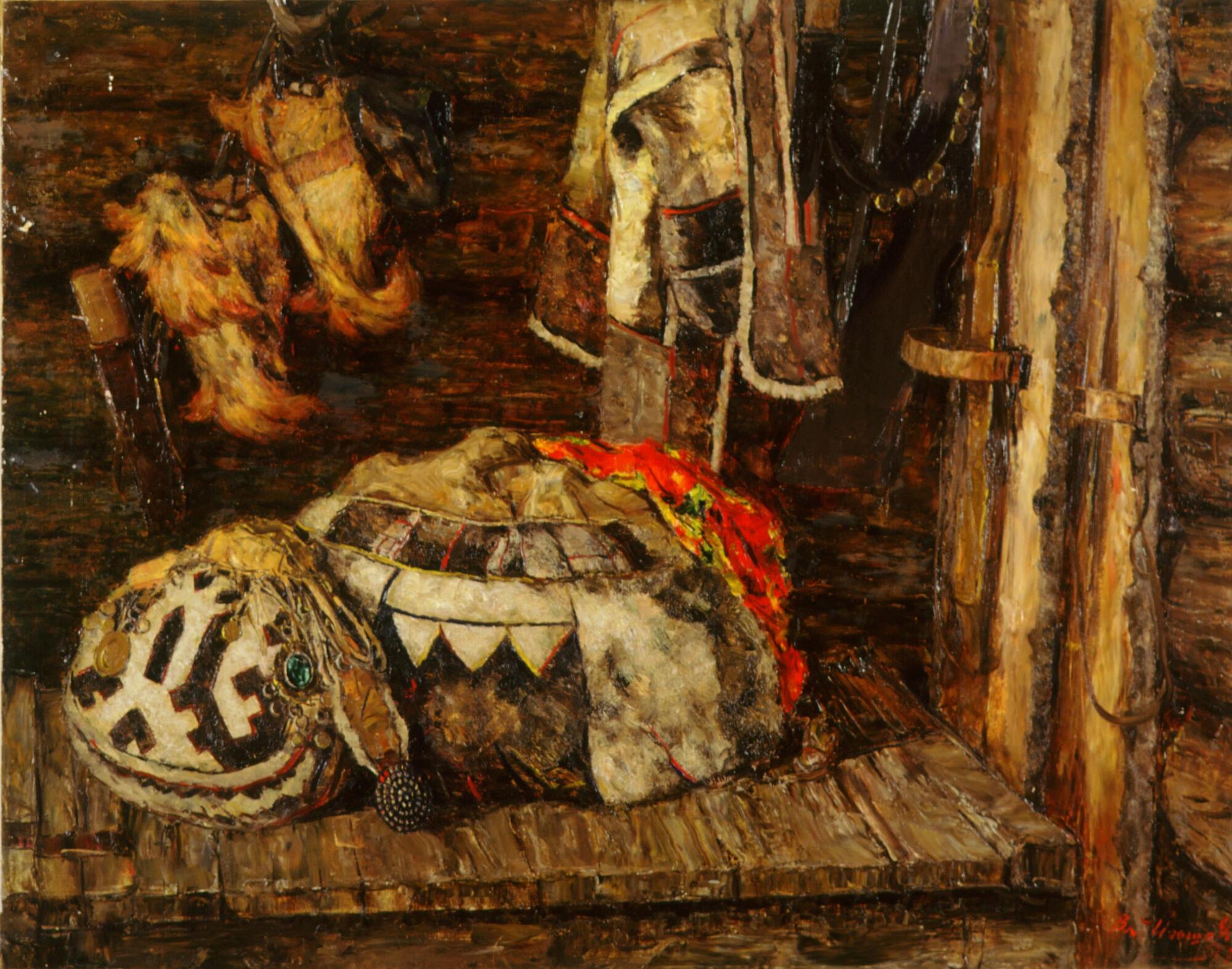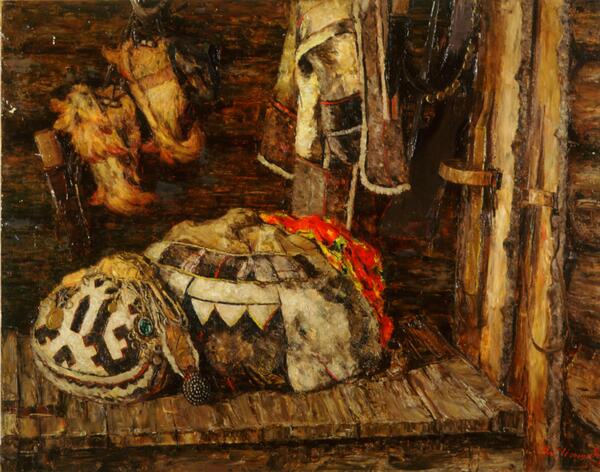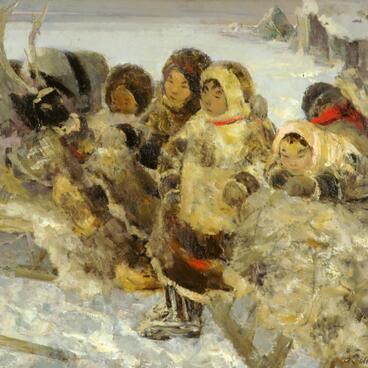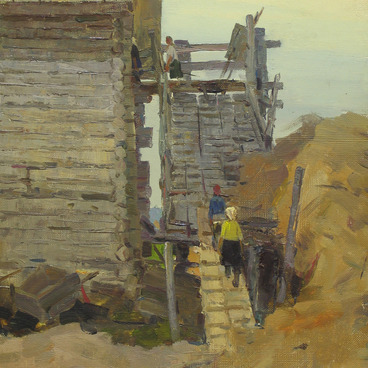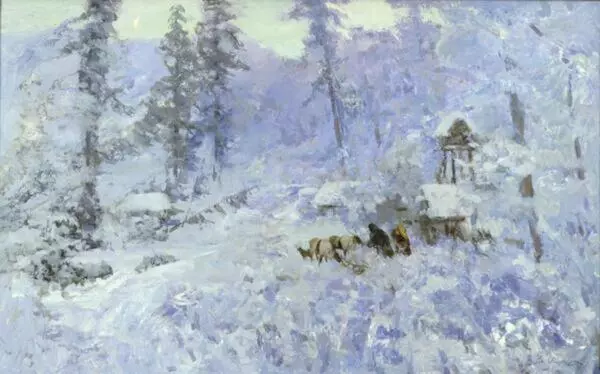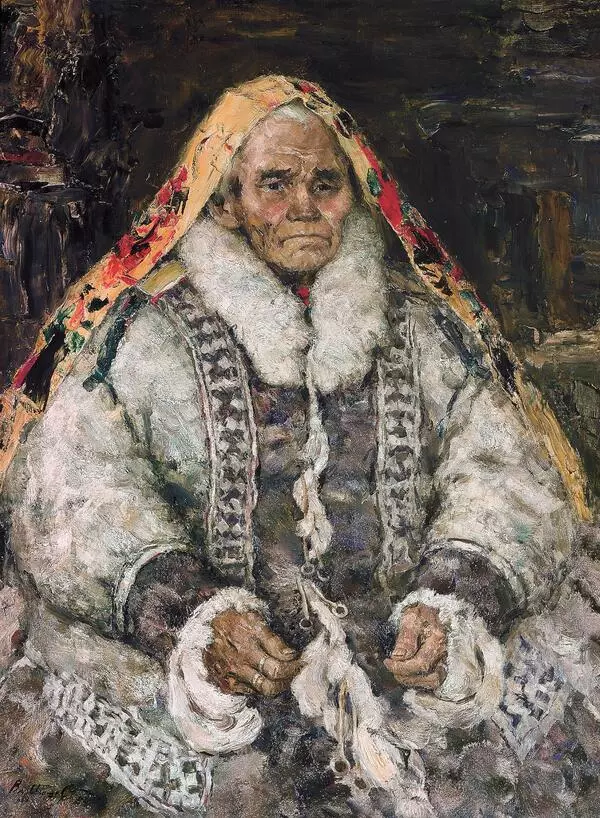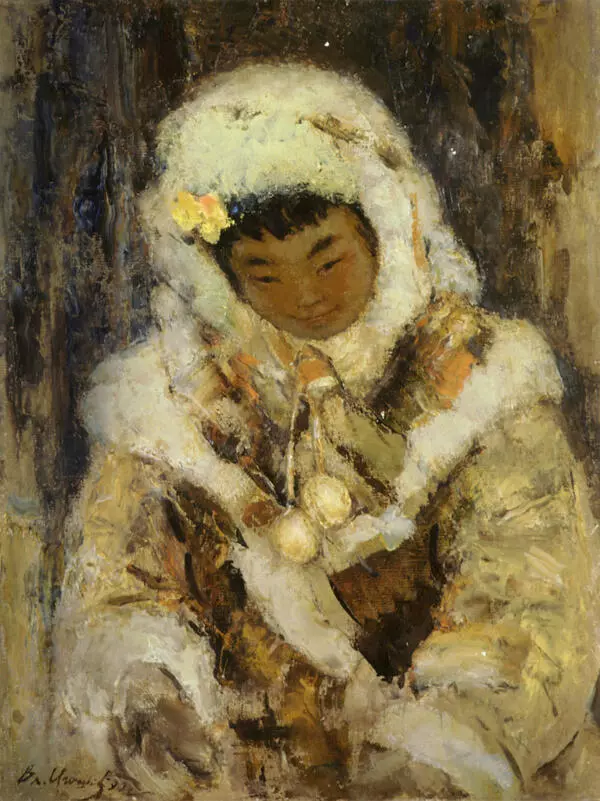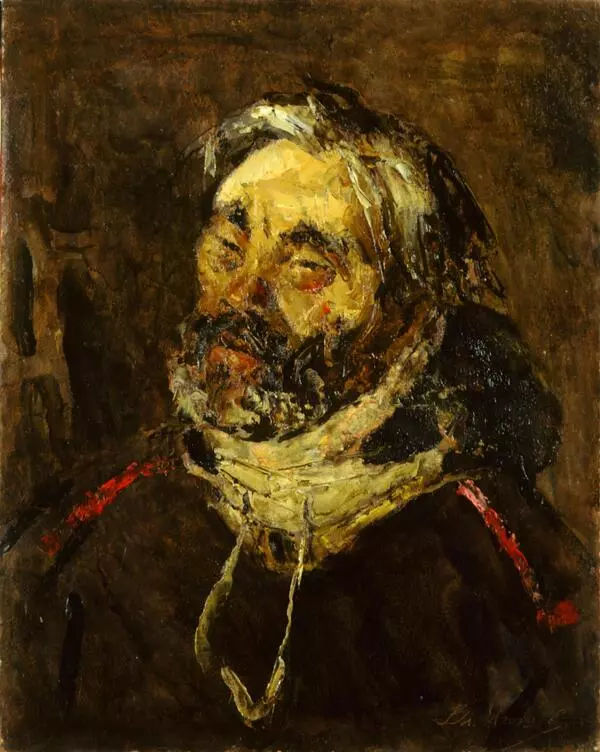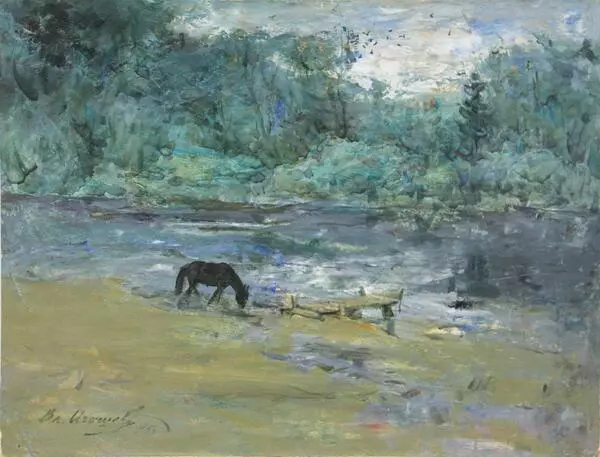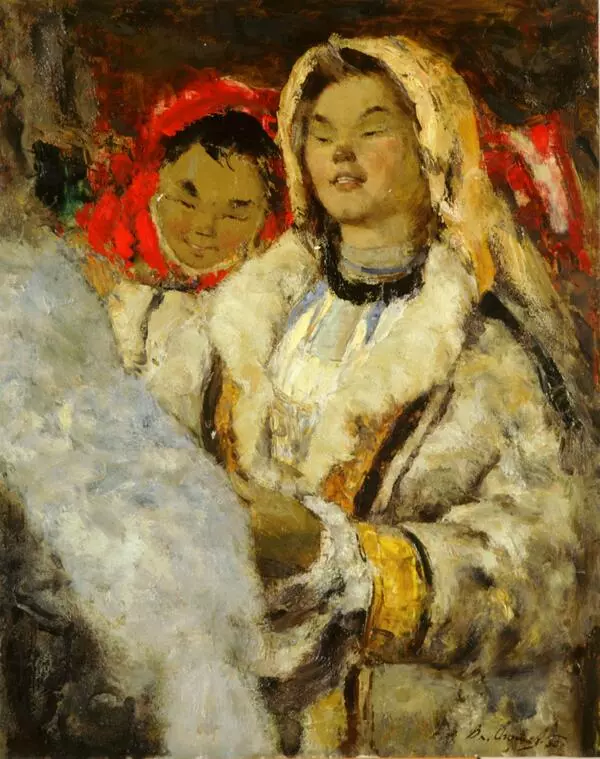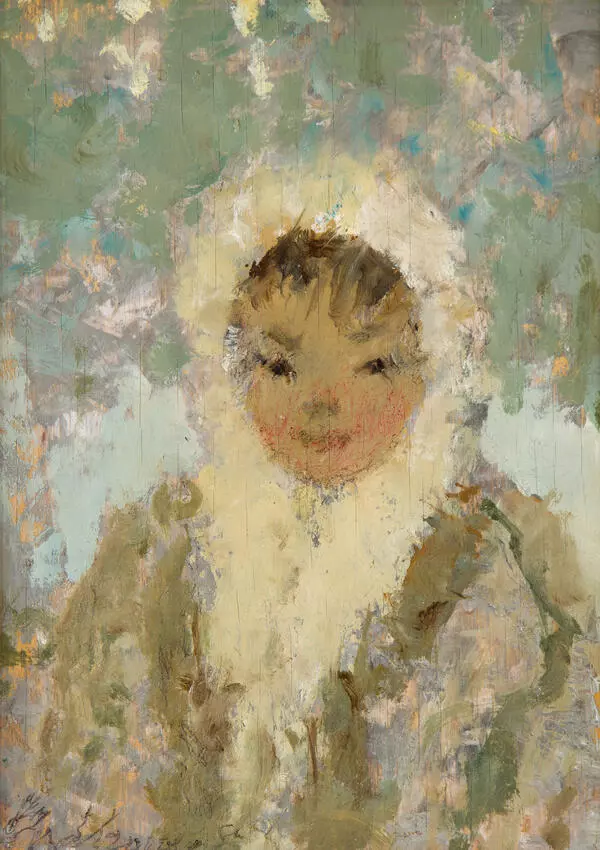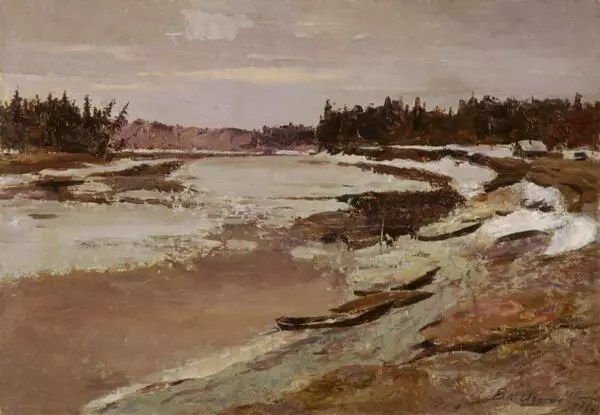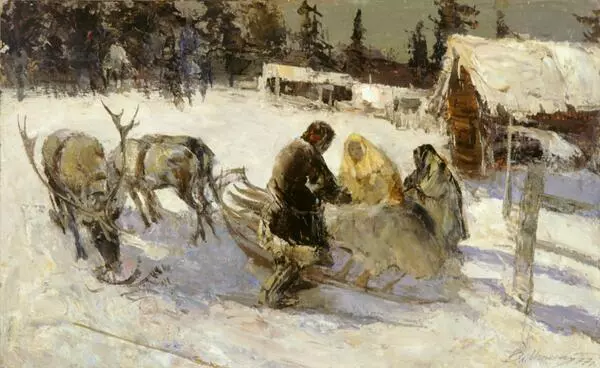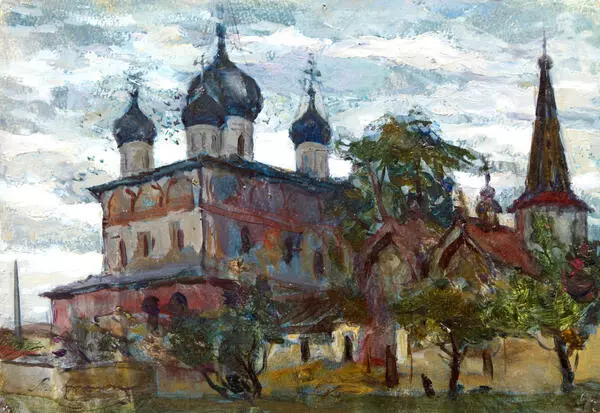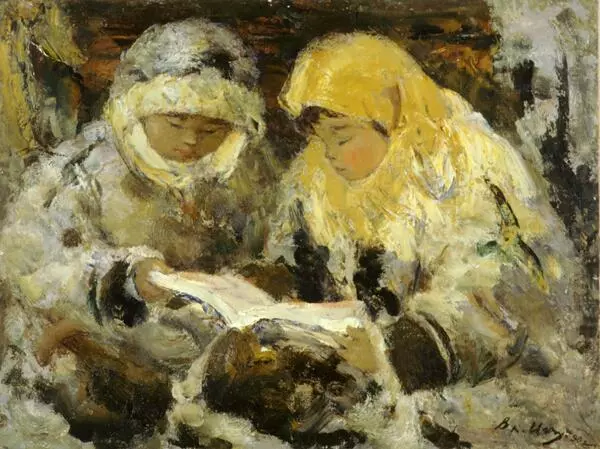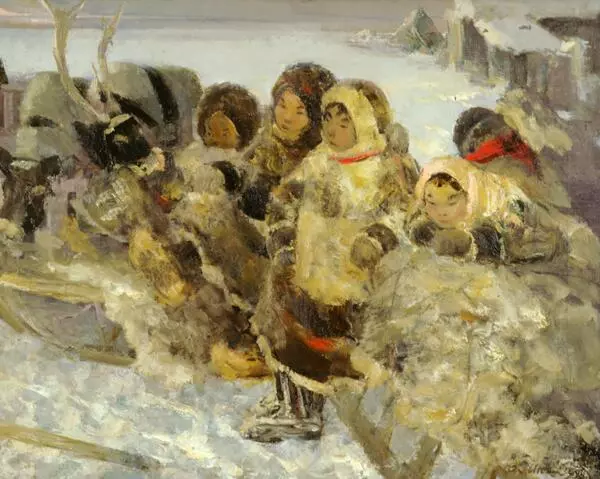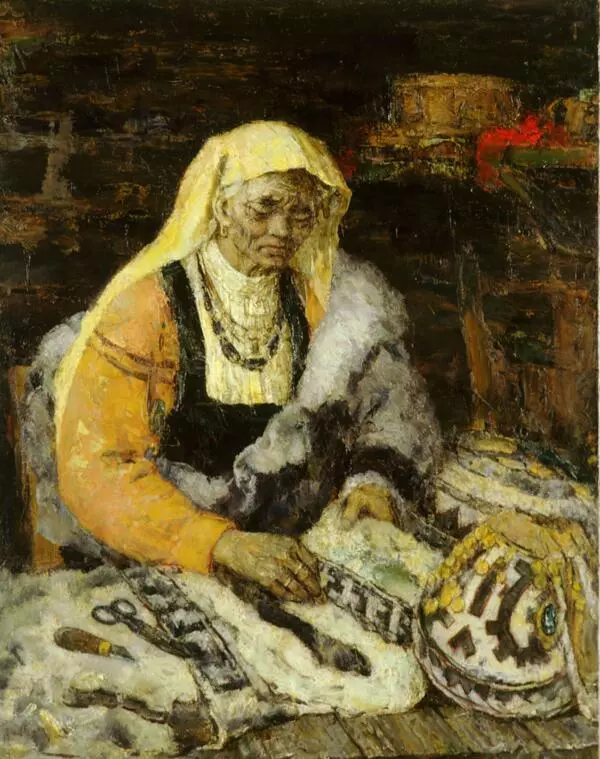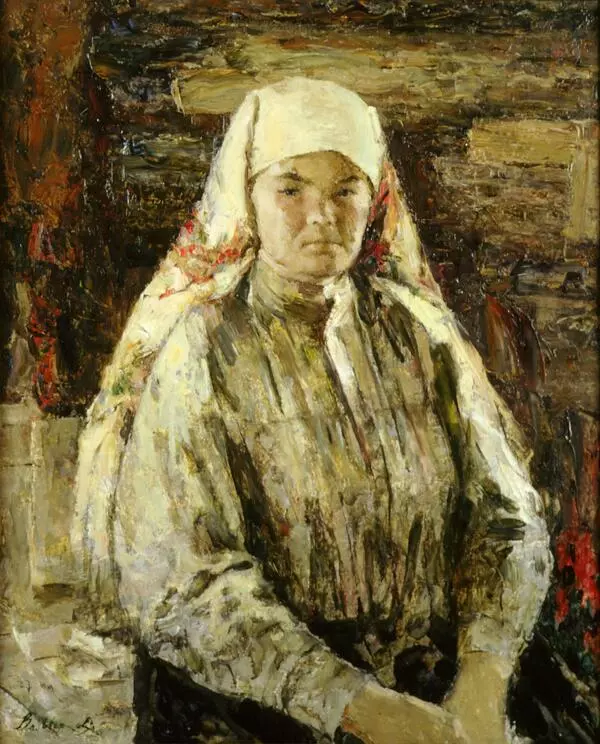Vladimir Igoshev painted Mansi Still Life in 1973. Even though the still life was staged, the arrangement of everyday objects of the Mansi people creates a sense of spontaneity. The colour scheme is also significant. The warm brown and grey colours and soft dim light create a cosy atmosphere. A bright red kerchief is emphasized; it produces an air of carelessness. In the centre of the composition there is a woman’s bag called tutchan decorated with ornamentation. It is placed on the wooden box along with a bag for clothing.
In Yugra, a small bag for handicraft materials was called tutchan. It usually contained pieces of leather, fur and fabric. Also, along with the fabric, needles and sewing threads women kept their amulets there. Women never parted with their tutchans, took them out while going to the camping ground or to the wood. Even during the burial a tutchan stayed with its owner. Tutchans were decorated with beads, mosaics made of moss and leather, pendants and national ornaments. It was believed that during the whole life these decorative elements protected the bag’s owner from the powers of darkness.
A pair of wooden skis is depicted on the right side of the painting. Usually they were made of whitewood or cedar wood. The wooden skis were called golitsy, and the ones pasted underneath with the reindeer fur or elk fur were called podvoloki (they were usually worn by hunters). For moisture protection a special bag made of light cloth was attached to the binding. Sometimes the skiers used the sticks made of white deal wood. A ring and a small shovel were attached to the ends of the stick.
On the wall are the necessary things for the people living in taiga: fur clothes, fur nyrics and a knife in a case. Nyriks (nyur) is a footwear of Yugan Khanti. The boots were usually made of cordovan leather (on the outside) and fur (on the inside). For the summer footwear the fluff was cut off. The bootleg was made of cloth of dense texture; the one used for making winter footwear was cold-proof. The daily footwear was decorated with the coloured stripes, and the holiday one was decorated with embroidery and ornament made of dark and light buckskin. The pattern was different in men’s and women’s shoes.
In Yugra, a small bag for handicraft materials was called tutchan. It usually contained pieces of leather, fur and fabric. Also, along with the fabric, needles and sewing threads women kept their amulets there. Women never parted with their tutchans, took them out while going to the camping ground or to the wood. Even during the burial a tutchan stayed with its owner. Tutchans were decorated with beads, mosaics made of moss and leather, pendants and national ornaments. It was believed that during the whole life these decorative elements protected the bag’s owner from the powers of darkness.
A pair of wooden skis is depicted on the right side of the painting. Usually they were made of whitewood or cedar wood. The wooden skis were called golitsy, and the ones pasted underneath with the reindeer fur or elk fur were called podvoloki (they were usually worn by hunters). For moisture protection a special bag made of light cloth was attached to the binding. Sometimes the skiers used the sticks made of white deal wood. A ring and a small shovel were attached to the ends of the stick.
On the wall are the necessary things for the people living in taiga: fur clothes, fur nyrics and a knife in a case. Nyriks (nyur) is a footwear of Yugan Khanti. The boots were usually made of cordovan leather (on the outside) and fur (on the inside). For the summer footwear the fluff was cut off. The bootleg was made of cloth of dense texture; the one used for making winter footwear was cold-proof. The daily footwear was decorated with the coloured stripes, and the holiday one was decorated with embroidery and ornament made of dark and light buckskin. The pattern was different in men’s and women’s shoes.
